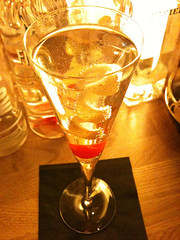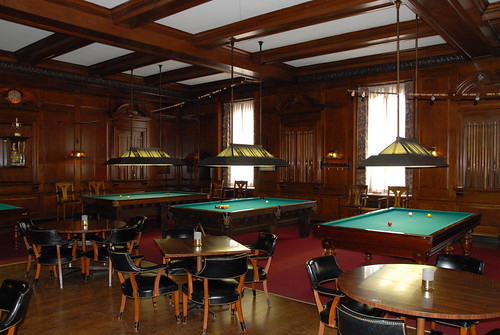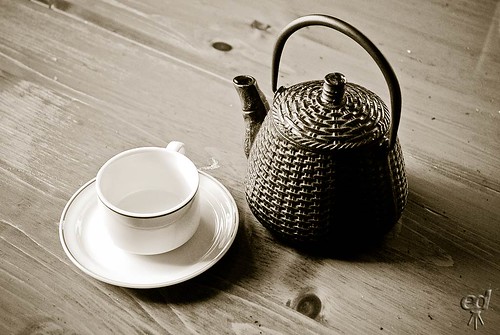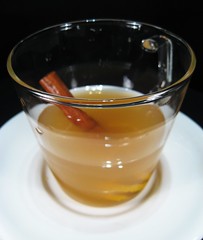Fifty Two: Another Castle
In which the Company celebrates a landmark.
Read More
I've posted a lot of recipes based around typical winter flavours over the past few weeks. There is, of course, a downside and it's that seasonal flavours will call that specific season to mind and not everyone wants to think about how cold it is outside all of the time. But then again, one of the beautiful aspects of a mixed drink is that through a trick of the senses, it can transport the drinker from a cold Edinburgh night to, well, anywhere.
Relativity
15ml Belvedere Cytrus (any citrus flavoured vodka will do)
10ml St. Germain Elderflower Liqueur
2 dashes Fee Bros. Peach Bitters
Top with champagne (the drier, the better)
Build in a chilled champagne flute. Garnish with a lemon zest twist and a cocktail cherry.
This project is on the home stretch and after forty-nine drinks, it's time to look at the elephant in the room. Over the past twelve or so months, we've seen rum drinks and Scotch drinks and vodka and gin and good God, we've even seen Genever a couple of times. What we haven't seen is bourbon.

Bourbon was declared as a "distinctive product of the United States" in 1964, but it's stood as the flagship of American spirit production for long before that. There are a couple of key distinctions between bourbon and European (Scottish and Irish) whiskies, not least the sour mash process. Arguably, given that pretty fundamental difference in production combined with the different grain base (at least 51% corn for bourbon versus the traditional malted barley for Scotch), comparing the two is like comparing apples and oranges. Maybe not so much apples and oranges - oranges and grapefruits might be more appropriate.

The natural question at this point is why has it taken me fifty weeks to feature one of the major spirits? Unfortunately, there's no easy answer. For one, dark spirits are not as popular as white spirits in the UK market, and bourbon is somewhere behind rum and Scotch in that category. As such, it doesn't feature in my thinking all that often and while it would be unfair to say that brands don't support their products with competitions and the like - Maker's Mark recently held took their UK finalists to the States and held the final in the Pendennis Club - but these are often a rarity among a calendar filled with events sponsored by vodka, gin and rum producers.
However, even on these distant shores, bourbon is deserving of more than a tip of the hat. Bourbon is the whiskey on which the cocktail tradition is built which makes it impossible to ignore. When talking about it in cocktails, the obvious point of reference is the Manhattan - I'm hearing an imaginary chorus of people shouting about proper Manhattans being made with rye, but if I put my hands just here over my ears, we'll be ok - and the overwhelming urge is to go old school. And if we're thinking old school, the obvious point of reference is the Sazerac and yes, the rye chorus has a point here. It's the aromatic rinse that makes the Sazerac great, and although absinthe pairs well with rye, it tends to overpower the more delicate flavours in most bourbons. It'd be incredibly opportunistic to claim that adding a rinse to a Manhattan constitutes a whole new recipe, so I've opted to add a couple of complimentary flavours from the great American tastebook in the form of maple syrup and Fee Brothers' Aztec Chocolate Bitters. Still incredibly opportunistic, though.
Maple Union
40ml bourbon (I used Maker's Mark)
20ml sweet vermouth (Cinzano Rosso)
1 barspoon maple syrup
1 dash Fee Bros. Aztec Chocolate Bitters
10ml Yellow Chartreuse
Rinse a chilled martini glass with the Chartreuse. Stir all other ingredients with ice and strain into the chilled, rinsed glass. Garnish with an orange zest twist.
Let's talk a little about context. After all, it's often said that nothing happens in a vacuum - though that's patently untrue given our little marble of evolved consciousness does circuits in one - and so much of the difficulty of creating recipes is creating those contexts in which your chosen ingredients can shine. I've been exploring the idea of seasonally appropriate flavours over recent weeks which, naturally, got me onto thinking about seasonally inappropriate flavours. Things that work in the context of sunny summer afternoons often don't on rainy winter evenings. Beyond that, certain types of ingredient have fallen into specific contexts over time. If I'd thought about it at the start of this project, the notion of using a vermouth in a refreshing citrusy cocktail would have seemed counterintuitive, given my own attitudes towards fortified wines back in the day. Context - or more accurately, the previous contexts in which an ingredient or technique are found - is a useful guide, but it shouldn't be taken as a stonecrafted edict.
And so we come to orgeat. No, this is not supposed to be a non sequitur.

Orgeat is beloved by many, but is rarely used outside of tiki drinks and more rarely still with spirits other than rum. If it appears in a recipe, you'd get incredibly long odds on the drink not falling into Embury's Sour Type classification. This may be as much because including an opaque sweetener in an Aromatic Type drink runs against the standardized aesthetic of a brilliantly clear beverage as it is because orgeat combines so very well with citrus and rum. However, once I'd realized that orgeat is hardly used outside of the tiki/rum/sour context, the obvious thing was to try it in an entirely different one.
This is how we end up talking about hot drinks.

There are exceptions - the Irish Coffee being the most notable - but hot alcoholic drinks are rare. It's worth remembering that they existed before iced cocktails, given the difficulty of obtaining a consistent supply ice in the era before refrigeration. One of the most popular concoctions of the North American colonists was flip, which was "mixed with a device called a loggerhead..."
"- a narrow piece of iron about three feet long with a slightly bulbous head the size of a small onion. It was originally created for heating tar or pitch, with the bulb buried in the glowing coals until it blazed red-hot, then quickly withdrawn and plunged into the pitch to make it pliable. The instrument served a similar heating function when plunged red-hot into a beer-rum-and-molasses concoctions. The whole mess would foam and hiss and send up a mighty head." Wayne Curtis, And a Bottle of Rum, p. 83
As I'm lacking in both an open fire and a loggerhead, I'd have to go for less dramatic means of heating my drink. In time, I'd also opt to steer clear of coffee and dairy. Fernet Branca and cloves were chosen as complementary flavours on top of a whisky base, the Glenrothes Select Reserve in this case. As for the orgeat, it really does work in this drink. Sometimes, taking things out of context is the only way to go.

L'Étranger Cocktail
50ml The Glenrothes Select Reserve
15ml orgeat
15ml Fernet Branca
5 cracked cloves
50ml hot water
Combine all ingredients in a mixing glass or suitable heat-proof container. Fine-strain into a small tea-cup or rocks glass (if you're going for a glass, make sure to heat it first so it doesn't crack). Garnish with a twist of lemon zest and a cinnamon stick.